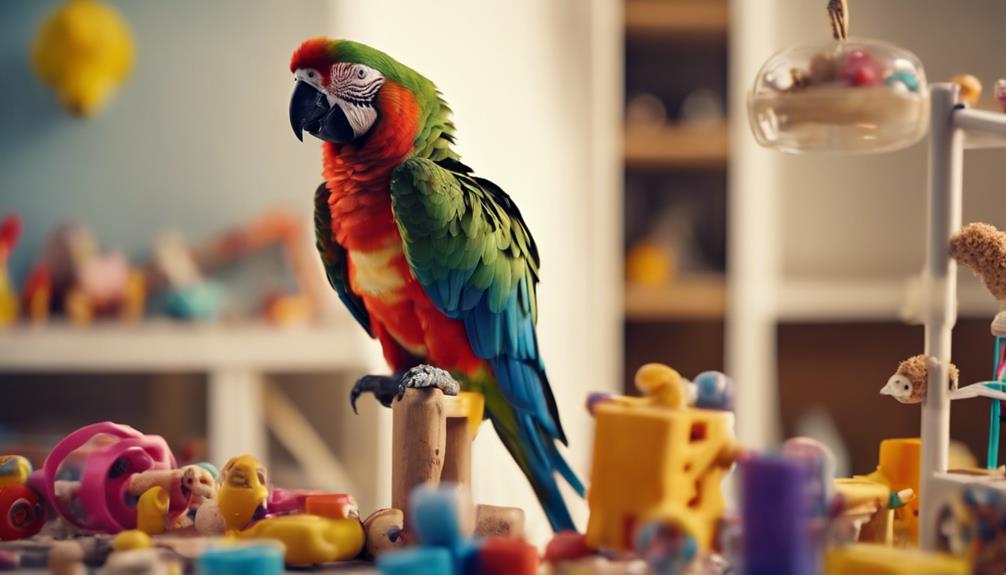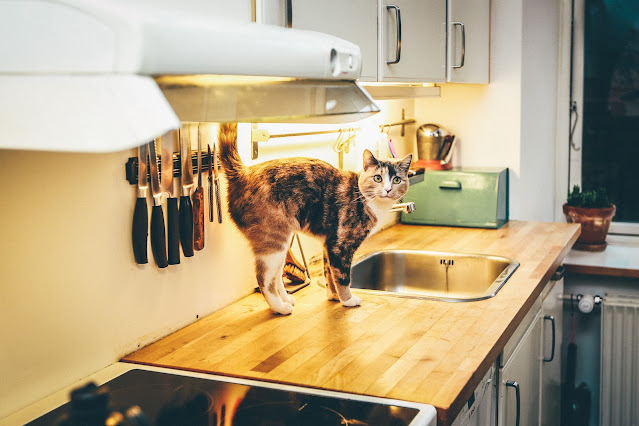Entertaining Eagles: Pet Birds As Entertainment

Pet Birds As Entertainment: Imagine the majestic eagle, a symbol of power and freedom, gracing your home as a pet. Have you ever considered the thrill and challenge of entertaining such a noble creature? Discover the intricate world of pet eagles as companions that not only entertain but also forge a unique bond with their owners. From training techniques to health tips and behavioral challenges, exploring the realm of eagle companionship promises an enriching journey filled with surprises and rewards.
The Appeal of Pet Eagles
Owning a pet eagle can provide a unique and fascinating experience for those interested in birds of prey. Training techniques play a crucial role in ensuring a healthy and harmonious relationship with your eagle. It is essential to use positive reinforcement methods, such as rewarding good behavior with treats, to establish trust and respect. Consistent training sessions focusing on obedience and hunting skills are key to developing a strong bond with your majestic bird.
Bonding activities are also instrumental in strengthening the connection between you and your pet eagle. Engaging in activities like flying together or going on hunts can enhance the partnership and create a deeper sense of companionship. These interactions not only foster trust but also provide mental stimulation and physical exercise for your eagle, promoting its overall well-being.
The benefits of ownership are vast, but it is crucial to consider the legal aspects of keeping a pet eagle. Depending on your location, there may be specific regulations and permits required to own such a magnificent bird. Understanding and complying with these laws is paramount to ensure the safety and legality of your ownership.
Bonding With Your Eagle
To form a strong bond with your eagle, engaging in trust-building activities is essential. Through consistent communication and training, you can establish a deep connection with your majestic bird. These interactions foster mutual understanding and respect, laying the foundation for a harmonious relationship.
Trust-Building Activities
Engage in daily interactive exercises with your eagle to establish a strong foundation of trust between you and this magnificent bird. Trust exercises and bonding activities are crucial for relationship-building with your eagle. Begin by spending time near the eagle, talking softly to it, and offering treats to create positive associations. Gradually move on to hand-feeding, allowing the eagle to approach you at its own pace. Encourage physical interaction through gentle petting and slow movements to build comfort and trust. Practice activities such as target training, where the eagle learns to touch a target stick for rewards, reinforcing a sense of cooperation. Remember, consistency and patience are key to strengthening the bond between you and your eagle.
Communication Through Training
Building trust through consistent and patient interactions is essential for establishing effective communication through training with your eagle. Training progress with your eagle is a gradual process that requires dedication and understanding. By using positive reinforcement techniques such as rewards with treats, you can reinforce good behavior and encourage your eagle to respond to communication cues effectively. Pay close attention to your eagle’s body language and vocalizations during training sessions to gauge its responses and adjust your approach accordingly. Consistency in your training methods will help your eagle understand what is expected, leading to clearer communication between you both. Remember, patience is key as you build a strong bond with your eagle through training.
Eagle Training Techniques
When training your eagle, it is crucial to utilize positive reinforcement methods to encourage desired behaviors. By consistently rewarding your eagle for following commands, you can build trust and strengthen your bond with the bird. Remember, consistency is key in reinforcing the training techniques and maintaining a harmonious relationship with your majestic pet.
Training With Positive Reinforcement
Training pet eagles using positive reinforcement techniques can significantly enhance their learning abilities and strengthen the bond between the bird and the trainer. Clicker training and target training are effective methods for behavior modification in eagles. Clicker training involves using a distinct sound, like a clicker, to mark desired behaviors, followed by a reward, reinforcing the behavior. Target training utilizes a specific object, such as a stick or a target pole, to guide the eagle into performing specific actions. Positive reinforcement, like offering food treats or verbal praise, encourages the eagle to repeat the desired behaviors. Consistency and patience are key when employing these techniques, as eagles respond well to clear signals and rewards, leading to successful training outcomes.
Building Trust Through Consistency
To establish a strong foundation for effective eagle training, consistent application of positive reinforcement techniques is essential. When it comes to building trust through consistency training with your eagle, several key exercises can help strengthen your bond and communication:
- Daily Training Sessions: Regular, structured training sessions help your eagle understand expectations and build a routine.
- Predictable Rewards: Consistently rewarding desired behaviors reinforces positive associations and encourages cooperation.
- Clear Communication Cues: Using consistent verbal and visual cues helps your eagle understand commands and expectations.
- Routine Handling: Regular, gentle handling and care create a sense of security and predictability for your eagle, fostering trust and cooperation in training sessions.
Enrichment Activities for Eagles
Engaging eagles in diverse enrichment activities stimulates their cognitive abilities and promotes natural behaviors in captivity. To provide optimal care for your majestic bird, it is crucial to implement various enrichment techniques that offer both mental stimulation and physical exercise.
Behavioral stimulation is essential for eagles to exhibit their natural instincts. Consider introducing puzzle feeders that require problem-solving skills to access food rewards. This not only keeps your eagle mentally engaged but also simulates the hunting behaviors they would display in the wild. Additionally, providing different types of perches and branches in their enclosure encourages them to perch at varying heights, mimicking their natural habitat and promoting physical activity.
Introducing novel objects such as feathers, branches, or even sound-producing toys can pique your eagle’s curiosity and provide mental enrichment. These items can encourage exploration and play, keeping your bird engaged and preventing boredom. Furthermore, incorporating training sessions into their routine can strengthen the bond between you and your eagle while providing mental stimulation through learning new behaviors.
Health and Nutrition Tips
To ensure your pet bird’s optimal health, it is crucial to focus on providing a balanced and nutritious diet consisting of essential nutrients like vitamins and minerals. Additionally, monitoring their vitamin and mineral intake is key to preventing deficiencies or excesses that could harm their well-being. Regular exercise and activity are vital for maintaining your pet bird’s physical health and mental stimulation.
Healthy Diet Essentials
Ensuring that your pet bird receives a balanced and nutritious diet is essential for maintaining its overall health and well-being. When it comes to healthy diet essentials for your feathered friend, consider the following:
- Varied Diet: Provide a mix of seeds, pellets, fruits, and vegetables to meet its nutritional needs.
- Fresh Water: Ensure your bird has access to clean, fresh water daily.
- Avoid Harmful Foods: Refrain from feeding your bird avocado, chocolate, caffeine, and salty foods.
- Regular Meal Times: Establish a routine for meal planning to promote healthy feeding habits.
Vitamin and Mineral Intake
For optimal health and nutrition, ensuring that your pet bird receives adequate vitamin and mineral intake is crucial. To maintain your bird’s well-being, consider incorporating dietary supplements into its daily routine. Dietary supplements can aid in providing essential vitamins and minerals that may be lacking in their regular diet.
Maintaining a proper nutritional balance is key to supporting your bird’s immune system, overall health, and longevity. Be mindful of the specific requirements of your bird species, as different breeds may have varying needs when it comes to vitamins and minerals. Regularly consult with a veterinarian to ensure that your bird’s diet is meeting all its nutritional requirements. Prioritizing vitamin and mineral intake will contribute significantly to your pet bird’s health and happiness.
Exercise and Activity
Maintaining optimal health and nutrition for your pet bird involves more than just ensuring proper vitamin and mineral intake; it also requires a focus on exercise and activity levels. When it comes to keeping your bird physically and mentally stimulated, consider the following:
- Flight Training: Encourage your bird to fly within a safe and controlled environment to promote physical exercise.
- Interactive Toys: Provide toys that require manipulation or problem-solving to engage your bird’s mind and body.
- Obstacle Courses: Create mini obstacle courses within your bird’s play area to encourage movement and agility.
- Foraging Activities: Hide treats or food in different areas of the cage to stimulate natural foraging behaviors and keep your bird active.
Indoor Vs. Outdoor Housing
When considering the housing of pet birds, one crucial factor to evaluate is whether indoor or outdoor accommodations are more suitable for their well-being and safety. Indoor housing provides a controlled environment that protects eagles from extreme weather conditions, predators, and potential diseases. It also allows for easier monitoring of their behavior and health. However, indoor spaces must be large enough to accommodate the eagle’s wingspan for proper exercise. Adequate perch size is essential to prevent foot problems and encourage natural behaviors like perching and stretching.
On the other hand, outdoor housing offers more space for eagles to fly and exercise. It provides exposure to natural sunlight, fresh air, and a variety of enriching stimuli. Outdoor aviaries should be securely enclosed to prevent escapes and protect against wild predators. Consideration should also be given to the local climate to ensure that the eagle is comfortable year-round. Outdoor housing requires regular maintenance to prevent the accumulation of waste and ensure a clean environment for the eagle’s health.
When deciding between indoor and outdoor housing for your eagle, it is essential to weigh the space requirements, environmental impact, and specific considerations for eagle housing. Ultimately, the chosen housing should prioritize the eagle’s safety, well-being, and ability to exhibit natural behaviors.
Socializing Your Eagle
As you consider the housing options for your eagle, understanding how to properly socialize your bird is essential for its overall well-being and mental stimulation. Eagle socialization and training are crucial aspects of ensuring a healthy and happy relationship with your avian companion. Here are some key points to help you socialize your eagle effectively:
- Start Early: Begin socializing your eagle as soon as you bring it home. Early interactions are essential for building trust and forming a strong bond with your bird.
- Use Positive Reinforcement: Reward good behavior with treats or verbal praise. Positive reinforcement is a powerful tool for behavior modification and trust building.
- Consistent Training: Establish a consistent training routine to help your eagle understand expectations and boundaries. Consistency is key to successful socialization.
- Patience and Understanding: Remember that socializing with an eagle takes time and patience. Be understanding of your bird’s unique personality and needs, and adjust your training methods accordingly.
Playtime and Games
To engage your eagle in meaningful and stimulating activities, incorporating playtime and games into its daily routine is crucial for its mental and physical well-being. Interactive toys can play a significant role in keeping your eagle entertained. Consider providing toys that encourage problem-solving, such as puzzle feeders that require the eagle to work for its treats. These toys not only offer mental stimulation but also help prevent boredom.
Flying games are another excellent way to keep your eagle active and engaged. You can set up obstacle courses indoors or outdoors to challenge your eagle’s flying abilities. Start with simple courses and gradually increase the difficulty as your eagle becomes more skilled. Flying through hoops or navigating around objects can provide both physical exercise and mental stimulation for your bird.
Rotate the toys and games regularly to prevent your eagle from losing interest. Observing your eagle’s reactions to different toys and activities can help you understand its preferences. Remember that playtime should be a positive experience for your eagle, so always monitor its behavior to ensure it is enjoying the games. By incorporating interactive toys and flying games into your eagle’s routine, you can enhance its overall well-being and create a fulfilling environment for your feathered friend.
Flying With Your Eagle
Engage your eagle in flight training sessions to strengthen its wings and enhance its aerial abilities. Flight training is essential for your eagle to develop its flying skills and build up the necessary muscles for sustained flight. Here are some key tips to ensure successful flying experiences with your majestic bird:
- Start Slow: Begin with short training sessions to prevent exhaustion and gradually increase the duration as your eagle gets stronger.
- Use Positive Reinforcement: Reward your eagle with treats and praise to reinforce good flying behavior during training sessions.
- Choose the Right Environment: Select open spaces free from obstacles for flight training to prevent accidents and allow your eagle to soar freely.
- Gradually Introduce Adventure Outings: Once your eagle has mastered basic flying skills, gradually introduce short adventure outings to new environments to stimulate its senses and provide mental enrichment.
Behavioral Challenges to Overcome
Confronting behavioral challenges in eagle training requires a deep understanding of avian psychology and consistent application of proven training techniques. Behavioral modification through positive reinforcement is a key aspect of managing the training challenges that come with owning an eagle as a pet. Eagles, like all birds, have complex behaviors that need to be carefully addressed to ensure their well-being and the safety of those around them.
When dealing with behavioral challenges in eagles, it is crucial to focus on positive reinforcement. This means rewarding desired behaviors with treats or praise to encourage the eagle to repeat those behaviors in the future. For example, if your eagle displays aggressive behavior, such as biting or excessive vocalizations, you can use positive reinforcement to redirect their focus onto a more appropriate behavior, like stepping onto a perch on command.
Training challenges may arise when trying to modify behaviors that are natural to eagles but undesirable in a domestic setting. For instance, eagles have a strong prey drive and may exhibit hunting behaviors towards smaller animals or even household objects. Behavior management techniques can help redirect this instinctual behavior towards more suitable outlets, such as hunting toys or participating in simulated hunting activities during training sessions.
Handling and Safety Precautions
When handling an eagle, it is essential to maintain a secure grip on its legs to prevent any potential injuries to yourself or the bird. Eagles are powerful birds with sharp talons that can cause harm if not handled correctly. Proper handling techniques are crucial for the safety of both the handler and the bird. Here are some safety measures to consider when interacting with an eagle:
- Use Protective Gear: Wear thick gloves and arm guards to protect yourself from the eagle’s sharp talons.
- Avoid Sudden Movements: Eagles can be easily startled, so it is important to move slowly and deliberately when handling them.
- Provide a Stable Perch: Ensure that the eagle has a stable and secure perch to prevent any accidental falls or injuries.
- Regular Health Checks: Schedule regular check-ups with a veterinarian to monitor the eagle’s health and well-being.
In addition to these safety precautions, it is also important to build a strong relationship based on trust and respect with the eagle. By following proper handling techniques and implementing safety measures, you can create a safe and enjoyable environment for both you and your pet eagle.
Building a Strong Relationship
To cultivate a strong bond with your pet eagle, it is imperative to establish trust through consistent positive interactions and reinforcement techniques. Training techniques play a crucial role in fostering this relationship. Start with basic commands like perching or flying to your arm. Use positive reinforcement such as rewards like treats or verbal praise to encourage desired behaviors. Consistency is key; practice these routines daily to reinforce trust and build a strong foundation for communication.
Bonding methods are essential for creating a deep connection with your pet eagle. Spend quality time together engaging in activities that your eagle enjoys, like flying or playing with toys. This shared experience helps strengthen your bond and creates positive associations with your presence.
Communication skills are vital in understanding your eagle’s needs and emotions. Pay close attention to its body language and vocalizations to interpret its feelings. Respond appropriately to its cues to show that you understand and respect its communication.
Trust building is a gradual process that requires patience and understanding. Avoid sudden movements or loud noises that may startle your eagle and erode trust. Instead, approach it calmly and respectfully to show that you are a reliable and trustworthy companion. By following these training techniques, bonding methods, and communication skills, you can establish a strong relationship with your pet eagle based on trust, respect, and mutual understanding.
Pet Birds As Entertainment Frequently Asked Questions
Can Pet Eagles Be Trained to Perform Tricks or Participate in Shows?
Training eagles for performance shows require patience and expertise. These majestic birds can be taught to perform tricks and participate in shows, showcasing their intelligence and grace. Proper training methods are crucial for their well-being.
What Are Some Common Misconceptions About Owning a Pet Eagle?
When owning a pet eagle, common misconceptions include expecting them to behave like traditional pets. Birds have unique behaviors and needs. Proper training methods, avian enrichment, and an understanding of bird welfare are crucial for their well-being.
How Do Pet Eagles Interact With Other Household Pets, Such as Dogs or Cats?
When introducing pet eagles to other household animals, interactions with birds can be complex. Training challenges arise due to differing communication styles. Consistent guidance, positive reinforcement, and supervised interactions are crucial for fostering peaceful coexistence.
Are There Any Legal Restrictions or Permits Required to Own a Pet Eagle?
To own a pet eagle, you must adhere to strict permit requirements and legal restrictions. These regulations ensure the well-being of the birds and protect endangered species. Failure to comply can result in severe penalties.
How Do You Address the Ethical Considerations of Keeping a Wild Animal as a Pet?
When addressing the ethical considerations of keeping a wild animal as a pet, you must prioritize the welfare of the animal. Utilize positive reinforcement training techniques to foster trust and ensure the bird’s physical and mental well-being.
Conclusion
In conclusion, owning a pet eagle can be a rewarding and enriching experience. Through bonding, training, and providing proper care, you can establish a strong relationship with your feathered companion. Enrichment activities, health tips, and flying exercises will help keep your eagle happy and healthy. Despite the behavioral challenges that may arise, with patience and dedication, you can overcome them and create a harmonious partnership with your majestic bird. Embrace the unique opportunity to entertain and bond with your pet eagle.








